Results 6,041 to 6,050 of 12091
Thread: Anandtech News
-
06-01-16, 09:52 AM #6041
Anandtech: Samsung Begins Mass Production of PM971: Tiny BGA SSDs with 1500 MB/s Read
Samsung this week said that it had begun mass production of its first SSDs in BGA form-factor. The PM971-NVMe tiny drive weighs about one gram, can store up to 512 GB of data and offers up to 1500 MB/s read speed. The SSDs will be used inside 2-in-1 hybrid computers, high-end tablets as well as ultra-thin notebooks later this year.
Samsung demonstrated its first BGA SSD earlier in 2016 and most of its specifications are generally known. The PM971 is based on up to 16 Samsung’s second-generation 48-layer MLC V-NAND. The SSD relies on Samsung's proprietary controller called Photon, which can extract high performance from a limited number of NAND channels and ICs thanks to architecture as well as the company’s proprietary TurboWrite technology. The PM971-NVMe SSD is equipped with a 512 MB LPDDR4 buffer, uses a PCIe 3.0 x2 interface and supports NVMe.
Samsung will ship three versions of its PM971-NVMe BGA SSDs with 128 GB, 256 GB, and 512 GB capacities, which will be enough for modern convertibles, tablets and ultra-thin laptops. Dimensions of the PM971-NVMe are 20 mm × 16 mm × 1.5 mm and the weight is just about a gram. Judging by the physical sizes of the package, it seems that the new PM971-NVMe BGA SSDs from Samsung comply with mechanical specifications for BGA SSDs proposed by multiple companies to JEDEC last year. In any case, the key message here is that Samsung’s BGA SSDs are significantly smaller than the smallest M.2 modules and can thus save space inside SFF PCs to make them either thinner, or prolong their battery life.
The PM971-NVMe SSD supports sequential read speed of up to 1500 MB/s as well as sequential write speed of up to 900 MB/s when the TurboWrite technology is enabled (earlier this year the company mentioned 600 MB/s write speed, but did not mention the TurboWrite). Samsung’s TurboWrite technology uses a portion of SSD’s NAND memory in pseudo-SLC mode, which significantly improves writing performance of the drive. Typically, Samsung uses its TurboWrite for its TLC NAND-based drives, which makes the PM971-NVMe the company’s first MLC-based SSD with a pseudo-SLC buffer. At this point we are not sure how exactly Samsung’s TurboWrite works in the PM971-NVMe and whether it speeds up or optimizes anything else apart from writing performance (since it is actually easier to read from SLC cells, the pSLC buffer can also help to improve read performance and even reduce power consumption). As for random performance, the PM971-NVMe SSD can perform 190K random read IOPS as well as up to 150K random write IOPS, according to Samsung.Brief Specifications of Samsung BGA SSDs PM971-NVMe Capacity 128 GB
256 GB
512 GBForm Factor BGA
20 mm × 16 mm × 1.5 mmController Samsung Photon Interface PCIe 3.0 x2 Protocol NVMe DRAM 512 MB NAND Samsung's 48-layer MLC V-NAND Sequential Read 1500 MB/s Sequential Write 900 MB/s with TurboWrite 4KB Random Read (QD32) 190K IOPS 4KB Random Write (QD32) 150K IOPS
Since the PM971-NVMe BGA SSDs are not designed for end-users, but for large PC suppliers as well as their OEMs/ODMs, Samsung does not disclose their prices. Right now, the company says that the it would start providing the new SSDs to its customers “this month”, which is not really relevant because the announcement was made on May 31. However, keep in mind that memory companies usually do not announce mass production until they have quantities of finished products ready to deliver to customers. Therefore, the PM971-NVMe drives may show up in actual devices sooner than one might think.
More...
-
06-01-16, 11:14 AM #6042
Anandtech: Patriot Adds 2 TB SSD into Lineup of Mainstream Drives
Patriot has introduced a new addition to the lineup of Ignite SSDs, this time with 2 TB capacity. The new drive will offer a lot of solid-state storage, but its performance will be constrained due to limitations of the SATA 6 Gb/s interface. Nonetheless, the price of the novelty promises to be relatively affordable.
When Patriot introduced its Ignite family of SSDs based on the quad-core Phison PS3110-S10 early in 2015, it aimed it at performance-mainstream systems, which is why the lineup only included models with 480 GB and 960 GB capacities. Since then, M.2 SSDs with PCIe interfaces have gained traction and many SSD suppliers had to reconsider positioning of their SATA drives. As a result, Patriot added a more affordable model with 240 GB capacity to the Ignite family later in the life cycle to address price-conscious customers. Meanwhile, the recent declines of NAND flash pricing enabled the company to build another SSD based on the S10 controller to address a new segment of buyers who require a lot of solid-state storage in a 2.5” form-factor, but not necessarily extreme transfer speeds.

The Patriot Ignite 2 TB SSD is rated to reach sequential read speeds of up to 560 MB/s and write speeds of up to 500 MB/s, which is consistent with performance of advanced MLC-based 2.5”/SATA drives. As for random performance, the 2 TB drive delivers approximately 90K and 80K IOPS for aligned read and write operations, respectively, in-line with that of other high-capacity Patriot Ignite drives.
Phison demonstrated its reference design for 2 TB SSDs based on the S10 controller about a year ago, but its customers were unwilling to use it back then. In mid-2015 prices of NAND flash memory were considerably higher compared to today, which is why demand for high-capacity SSDs was not expected to be significant and hence it was not economically feasible to release high-capacity drives for many vendors, who do not own semiconductor fabs.Specifications of Patriot Ignite SSDs 240 GB 480 GB 960 GB 2 TB Model PI240GS325SSDR PI480GS25SSDR PI960GS25SSDR - Form Factor 2.5"/7 mm Controller Phison PS3110-S10 Interface SATA 6 Gbps Protocol AHCI DRAM 256 MB 512 MB 1 GB 2 GB (?) NAND Toshiba's NAND made using 15 nm process technology Sequential Read 560 MB/s Sequential Write 405 MB/s 545 MB/s 500 MB/s 4KB Random Read (QD32) 100K IOPS 80K IOPS 90K 4KB Random Write (QD32) 85K IOPS 75K IOPS 80K Launch Date 2015 Q1 2015 Q1 2015 Q4 2016
Today, prices of NAND are considerably lower. For example, the average contract price of a 128 Gb MLC NAND chip was $3.51 (the lowest contract price started at $2.8 per chip) in the second half of April, down from $5.06 in the first half of May, 2015, according to DRAMeXchange. As a result, the cost of NAND needed for a 2 TB drive is between $360 and $500, depending on the amount of memory used for overprovisioning. Therefore, it is viable for numerous SSD suppliers to offer such SSDs to end-users. Moreover, since prices of NAND keep dropping, high-capacity SSDs naturally get cheaper to make over time.
When considering costs of SSDs based on controllers from Phison, keep in mind that the company maintains strong relations with Toshiba and usually sells not just its controllers, but nearly finished SSDs with Toshiba’s NAND flash memory. Therefore, the actual cost of such package could be below the average cost of NAND flash memory obtained on the open market. On a side note, if 2 TB SSDs based on the S10 controller are now available from Phison, a number of other suppliers could also offer such drives eventually.
Patriot does not reveal retail price of its Ignite 2 TB SSD today because it only plans to sell it sometimes in Q4. Nonetheless, it should not be too high and $700 - $900 price-range seems to be more or less viable.
More...
-
06-01-16, 01:30 PM #6043
Anandtech: SanDisk Unveils New Generation of USB Type-C Flash Drives
Last year SanDisk released its first-gen USB flash drives featuring two types of connectors: USB-A and USB-C in a bid to address the growing market of devices featuring USB Type-C, but retain compatibility with billions of legacy devices. This year, SanDisk introduced a new generation of such drives with adifferent design and higher-capacity options.
The second-generation SanDisk Ultra Dual Drive USB Type-C family of USB flash drives includes models with 16 GB, 32 GB, 64 GB and 128 GB of NAND memory. The drives offer transfer speeds up to 150 MB/s and are compatible with all devices featuring USB-A and USB-C receptacles. Furthermore, they are also compatible with SanDisk’s Memory Zone app for Google Android to manage and backup content on devices running the OS.
Introduced commercially in 2015, the USB Type-C connector is rapidly gaining traction among suppliers of PCs, smartphones, tablets and other electronics. For manufacturers of peripherals adoption of new ports by devices is an important factor because they want to address broader audiences with their products. While USB Type-C is gaining popularity, there are still way too many systems featuring USB Type-A ports, which is why it makes a lot of sense to build peripherals compatible with both types of USB.SanDisk Ultra Dual Drive USB Type-C Family 16 GB 32 GB 64 GB 128 GB Model (U.S./Europe) SDDDC2-016G-A46
SDDDC2-016G-G46SDDDC2-032G-A46
SDDDC2-032G-G46SDDDC2-064G-A46
SDDDC2-064G-G46SDDDC2-128G-A46
SDDDC2-128G-G46Interface USB-A, USB-C, 5 Gbit/s Sequential Write 130 MB/s 150 MB/s Warranty 5 Years Price $19.99 $29.99 $39.99 $69.99 Launch Date Q2 2016
Moreover, analysts from Strategy Analytics believe that even by 2020 only about 44% of mobile phones will use USB-C, which is a remarkable growth, but which still means that 66% of mobile phones will keep using other types of connectors.
SanDisk and its partners are already selling the new drives with 16GB, 32GB, 64GB and 128GB capacities for U.S. MSRPs of $19.99, $29.99, $39.99 and $69.99, respectively.
Gallery: SanDisk Unveils New Generation of USB Type-C Flash Drives




More...
-
06-01-16, 03:09 PM #6044
Anandtech: Corsair Announces Dominator Platinum Special Edition and Vengeance LED Mem
In the last 10 years, Corsair has greatly expanded its product lineup and nowadays it produces virtually the whole range of hardware and accessories for enthusiasts with the exception of motherboards, graphics cards, displays, and some exotics (like DIY liquid cooling kits). Nonetheless, memory modules reserve a special place in the company’s product family. At Computex, Corsair introduced two new lineups of DRAM modules: the Vengeance LED and the Dominator Platinum Special Edition.
The Corsair Vengeance LED modules will bring new heatspreaders with red or white LEDs to the range of high-performance (yet, not top-of-the-range) memory solutions from the company. The modules will be based on Samsung’s DDR4 DRAM chips and will work at up to 4333 Mbps data-rates. For now, Corsair does not disclose which of Samsung’s DDR4 ICs it intends to use for the Vengeance LED modules, but in addition to the famous Samsung E 4 Gb chips (which are used for high-speed 4 GB DDR4-4000+ modules), it could use the company’s 8 Gb DRAMs made using 20 nm or even the latest 8 Gb chips produced using 18 nm fabrication processes to build some of the new modules.
For those, who demand absolutely the fastest DIMMs, Corsair will offer the Dominator Platinum Special Edition modules with new aluminum heatspreaders featuring black brushed aluminum as well as chrome finishes. The Dominator Platinum SE will be aimed at various Intel processors as well as the X99 and 100-series platforms. The modules will be based on Samsung’s “top bin” DDR4 DRAM chips as well as custom PCBs, but right now Corsair does not reveal any details regarding clock-rates or capacities.
Corsair intends to launch its Vengeance LED and Dominator Platinum Special Edition commercially in Q3. The company will disclose specs and prices of the new modules towards the launch.
More...
-
06-02-16, 07:40 AM #6045
Anandtech: AKiTiO Thunder3 PCIe SSD Thunderbolt DAS Review
The benefits of Thunderbolt 3 and its 40 Gbps link are best realized in a daisy-chain configuration involving multiple high-bandwidth I/O peripherals. The Alpine Ridge Thunderbolt 3 controller in a host connects to the CPU using a PCIe 3.0 x4 link. From the perspective of a single device that is not a huge drive array, it is likely that a PCIe 3.0 x4 SSD is best suited to fully utilize the available bandwidth. AKiTiO recently started selling their Thunder3 PCIe SSD. It puts a 1.2TB Intel SSD 750 PCIe 3.0 x4 NVMe add-in card in a standard two-port Thunderbolt 3 aluminum chassis along with a dedicated DisplayPort output. This review will look at the hardware design and performance aspects of the Thunder3 PCIe SSD.
More...
-
06-02-16, 09:37 AM #6046
Anandtech: Synaptics to Add Inexpensive Fingerprint Reader to Any PC
The importance of biometric authentication is growing these days because passwords, which are easy to remember, are usually not strong enough, whereas complex passwords are hard to remember and enter. While many new mobile devices feature fingerprint reader and some even have an iris scanner, there is a fleet of legacy PCs that do not support any biometric sensors. Synaptics has developed an inexpensive USB dongle, which can add a fingerprint scanner to any PC. The company will offer the device to its customers later this year.
The Synaptics fingerprint USB dongle is based on the company’s Natural ID technology that relies on capacitive touch sensing and SentryPoint security features. The device is small enough to remain unremarkably installed in a USB port, hence, users will not have to carry it separately. Synaptics calls its dongle “Turnkey USB Fingerprint Solution”, but does not disclose the model of its sensor used by the device, or the encryption type supported by the product because there will be several types of dongles with different feature-set. Synaptics’ latest fingerprint solutions support AES 256-bit of the fingerprint template data. The only security-related information that Synaptics discloses about the dongle is that it is certified by FIDO (Fast IDentity Online) and is compatible with Windows Hello and Microsoft Passport (i.e., Microsoft Windows 10 operating system only).
The USB fingerprint scanner is a finished, ready-to-use device, which Synaptics will offer to partners, who will then be able to either bundle them with their computers or simply resell them to interested parties under their brands. Pricing of the device will depend on exact configurations of the hardware, but should be "well below $50", according to Synaptics.
Synaptics is demonstrating its USB fingerprint scanner at Computex this week, plans to sample the product in Q3 and start to sell them in Q4.
More...
-
06-02-16, 11:30 AM #6047
Anandtech: Patriot to Release Viper DDR4-2400, DDR4-2800 SO-DIMMs for Laptops
Patriot Memory has introduced its first enthusiast-class DDR4 SO-DIMMs for high-performance-notebooks and small form-factor PCs. The new Patriot Viper modules will combine fairly high clock-rates with decent capacities, thus, enabling users to build SFF systems with up to 32 GB of memory and up to 44.8 GB/s of bandwidth.
The Patriot Viper family of DDR4 SO-DIMMs includes individual modules with 8 GB and 16 GB capacities rated to operate in DDR4-2400, DDR4-2666 and DDR4-2800 modes with CL15/CL18 latency settings at 1.2V. Patriot will sell the modules individually as well as in dual-channel 16 GB and 32 GB kits. The modules feature SPDs that contain XMP 2.0 profiles, which simplify memory overclocking beyond JEDEC specs. Like other Viper-series memory, the new SO-DIMMs feature the company’s signature red aluminum heat spreader.
Patriot’s Viper DDR4 modules for notebooks operate at 2.4, 2.6 and 2.8 MT/s data rates, which are not officially supported by today’s Intel Skylake microprocessors, but which can safely work in modern laptops and Intel NUC-like PCs with decent cooling. The high-speed DDR4 SO-DIMMs will be particularly useful for systems that rely on Intel’s higher-performing integrated graphics cores because they increase maximum bandwidth available to the CPU to 44.8 GB/s, or by 31%, from 34.1 GB/s offered by two DDR4-2133 sticks, a good thing for bandwidth-hungry iGPUs.
Among large suppliers of memory modules, only Patriot and G.Skill currently offer DDR4-2800 SO-DIMMs for laptops. Other makers are a little more cautious when it comes to high-speed modules for notebooks and SFF PCs, which is why their solutions top at 2.4 – 2.66 MT/s.Patriot Viper DDR4 SODIMMs and Kits Density Speed
LatencyLatency Voltage Price 8 GB DDR4-2400
DDR4-2666
DDR4-2800CL15 15-15-35
CL18 18-18-43
CL18 18-18-431.2 V$34.99
~
$169.9916 GB 16 GB (2x8 GB) 32 GB (2x16 GB)
Patriot plans to start selling its Viper DDR4 SO-DIMMs on June 10, 2016, worldwide. One 8 GB DDR4 module will retail for $34.99, whereas a 32 GB DDR4-2800 dual-channel kit will cost $169.99. Those, who plan to use modules in dual-channel systems should acquire matched pairs of modules with appropriate timings.
More...
-
06-03-16, 09:55 AM #6048
Anandtech: Raijintek Shows Off Pumpless Liquid Cooling System
In the recent year’s all-in-one liquid cooling solutions gained significant popularity thanks to efficiency and quieter operation. However, even with those improvements, a closed loop cooler still needs a pump to enable circulation of liquid as well as at least one fan to maximize cooling efficiency. Seen as the next step, pumpless liquid cooling systems have been discussed by various developers for a while, and Raijintek demonstrated one at Computex 2016.
The prototype of Raijintek’s pumpless liquid cooling system is comprised of a completely passive CPU/GPU water block with a copper base (featuring a system of very thin channels to maximize heat dissipating surface area) with two nozzles of different diameter, two tubes as well as a radiator (images are by Hermitage Akihabara). The LCS is filled with a customized coolant, which has evaporation point of around 40°C to 50°C. Once the CPU or the GPU gets hot enough, the coolant turns into vapor and streams to the radiator through one of the tubes where it condenses back to liquid, whereas the cool coolant streams back to the water block.
Natural processes enable the circulation and the liquid cooling system is nearly noiseless (keep in mind that physical processes like water circulation create noises). In the best-case scenario, the higher is the temperature of the chip cooled down by such a LCS, the faster is the circulation. The theoretical limit of TDP that Raijintek’s prototype can handle is unclear, but different reports point to over 200 W, which is in line with traditional high-end and AIO liquid coolers. At Computex, the manufacturer demonstrated the prototype without any fans, but the radiator can be equipped with two of them to maximize cooling performance. While fans are not compulsory, there is a requirement, though: the radiator always has to be installed above the water block, which is something harder to do in small form-factor PCs.

The advantages of pumpless LCS are obvious: it does not have moving parts and therefore is more reliable than traditional systems; it does not generate as much noise and does not use power, provided that the coolant is cheap enough, the cost of a pumpless LCS should be lower than the cost of a traditional closed-loop liquid cooling system. On the other hand, it is completely unclear how the liquid with a very low evaporation point handles high TDPs when placed in a hot external environment. Besides, temperature of such liquid should remain below 40°C at all times (so, you are not going to use such device in Qatar, where temperatures above 40°C are common). Finally, the LCS must be perfectly sealed to maintain vacuum inside because any slight imbalance of pressure inside will harm its operation, a requirement that potentially increases the cost of the device.
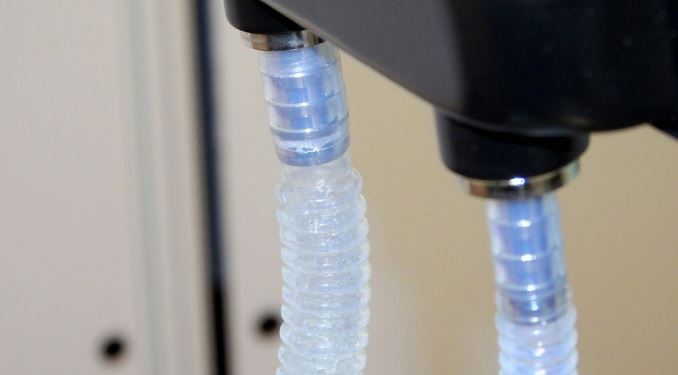
Raijintek has invested a lot in development of its pumpless LCS over the years. In fact, the first prototype was ready back last year, but the company decided not to demonstrate it, but patent the technology in major markets first. Given the price of the new coolant as well as a new manufacturing process required to build pumpless LCS with vacuum inside, the price of the final product will not be low and may be actually higher compared to traditional AIO liquid coolers.
It is interesting to note that Raijintek is not the first to showcase a pumpless closed-loop liquid cooling system. Back in 2014, Silverstone demonstrated its prototype at Computex, but so far the company has not released it commercially.
Sources: BitTech, Hermitage Akihabara, TechPowerUp, 3DNews.
More...
-
06-06-16, 08:21 AM #6049
Anandtech: The Fractal Design Node 202 Case Review: Mini-ITX Gaming For the Living Ro
PCs may be versatile and powerful multimedia and gaming machines, yet their insertion into elegant living rooms can be problematic, as large systems and tower cases are a major visual dissonance in a living room, whereas consoles were designed with that specific purpose in mind. In this review we are taking a look at Fractal Design's Node 202, a case designed to fit a strong gaming system into a volume of just 10 liters, comparable to that of a gaming console.
More...
-
06-06-16, 09:01 AM #6050
Anandtech: Samsung Announces The Galaxy S7 Active
Today Samsung is following up the launch of its Galaxy S7 and Galaxy S7 edge smartphones with the introduction of the Galaxy S7 active, a ruggedized version of the flagship S7. Like previous active series phones, it uses the same internal hardware as the rest of its lineage, including the latest Snapdragon 820 SoC with a quad-core CPU utilizing Qualcomm's custom 64-bit Kryo cores and Adreno 530 GPU. This is paired with 4GB of LPDDR4 RAM and 32GB of UFS 2.0 NAND. Additional internal storage options are not available for the S7 active, but it still supports microSD cards for expansion.
The S7 active also uses the same 5.1-inch QHD SAMOLED display as the regular S7, which we found provides a well-calibrated sRGB mode along with additional modes for those who prefer more saturated colors. It also managed to hit about 500 nits peak brightness when using auto brightness mode at 100% APL.
Despite using the same screen size as the S7, the S7 active is larger and heavier because of the additional protection its outer shell provides. Replacing the sleek but fragile glass and metal construction is a larger but more durable plastic and metal chassis that increases the height and width by 6.4 mm and 5.4 mm, respectively. Thickness also increases by 2 mm to 9.9 mm, which helps make room for a larger 4000mAh battery.
What really sets the Galaxy S7 active apart from Samsung’s other phones, however, is its improved durability. It retains the S7’s IP68 rating that makes it dust tight and allows for immersion in water up to 5 feet for up to 30 minutes. There's an additional protective polycarbonate layer on top of the screen, which eliminates the stress concentrations that result from scratches, increasing the shatter resistance of the cover glass.Samsung Galaxy S7 Family Samsung Galaxy S7 active Samsung Galaxy S7 Samsung Galaxy S7 edge SoC Qualcomm Snapdragon 820
(MSM8996)
2x Kryo @ 2.15GHz
2x Kryo @ 1.59GHz
Adreno 530 @ 624MHzUS, China, Japan:
Qualcomm Snapdragon 820
(MSM8996)
2x Kryo @ 2.15GHz
2x Kryo @ 1.59GHz
Adreno 530 @ 624MHz
Rest of World:
Samsung Exynos 8890
4x Cortex-A53 @ 1.58GHz
4x Exynos M1 @ 2.28-2.60GHz
Mali T880MP12 @ 650MHzRAM 4GB LPDDR4-3600 NAND 32GB (UFS 2.0)
+ microSD32GB / 64GB (UFS 2.0)
+ microSDDisplay 5.1-inch 2560x1440 SAMOLED 5.5-inch 2560x1440 SAMOLED
Dual EdgeDimensions 148.8 x 75.0 x 9.9 mm
185 grams142.4 x 69.6 x 7.9 mm
152 grams150.9 x 72.6 x 7.7 mm
157 gramsModem Qualcomm X12 (Integrated)
2G / 3G / 4G LTE (Category 12/13)Snapdragon 820:
Qualcomm X12 (Integrated)
2G / 3G / 4G LTE (Category 12/13)
Exynos 8890:
Samsung Shannon 935
2G / 3G / 4G LTE (Category 12/13)SIM Size NanoSIM Front Camera 5 MP, f/1.7, auto HDR Rear Camera 12 MP, Sony IMX260 Exmor RS, 1.4μm, f/1.7, PDAF, OIS, auto HDR, object tracking autofocus, LED flash Battery 4000mAh
non-replaceable3000mAh (11.55 WHr)
non-replaceable3600mAh (13.86 WHr)
non-replaceableConnectivity 802.11a/b/g/n/ac 2x2 MU-MIMO, BT 4.2, NFC, GPS/GNSS, microUSB 2.0 Launch OS Android 6 with TouchWiz Battery Charging wireless charging (WPC 1.1 & PMA 1.0), Fast Charging Fingerprint Sensor Yes, touch Launch Price
(No Contract)TBD $650+ USD $750+ USD
Samsung also claims the S7 active passes the U.S. Military Standard (MIL-STD) 810G tests for a ruggedized phone, including those for exposure to high and low temperatures, salt fog, humidity, and shock, which entails dropping the phone in different ways onto two inches of plywood over concrete from a height of at least four feet.
While discussing the Galaxy S7 active, Samsung stressed its emphasis on enterprise customers with the phone’s security and productivity features. It still has the same touch-based fingerprint sensor as the S7 for authentication and also includes Samsung's Knox security suite that allows for the separation of work and personal content, in addition to other security-focused features.
The larger 4000mAh battery should help the S7 active last longer than the regular version. The battery is not swappable, but it still supports Samsung's fast charging technology and wireless charging to help get the phone back into action more quickly.
Like previous active phones, the Galaxy S7 active will be an AT&T exclusive. It will be offered in three different colors—Cammo Green, Titanium Gray, Sandy Gold—and will be available for purchase on June 10, but the price has not been disclosed.
More...
Thread Information
Users Browsing this Thread
There are currently 25 users browsing this thread. (0 members and 25 guests)







 Quote
Quote
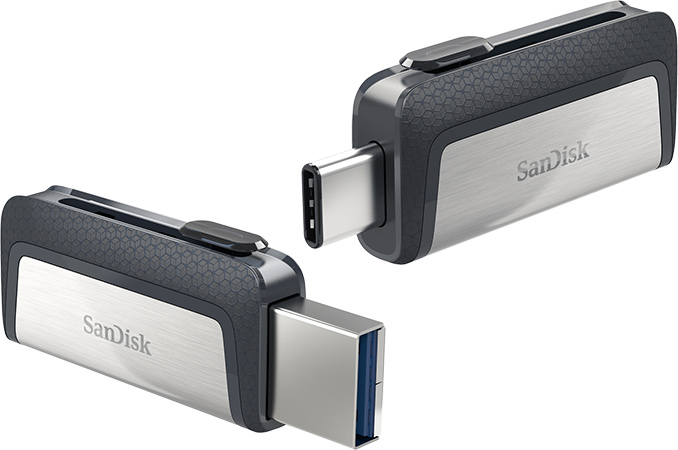
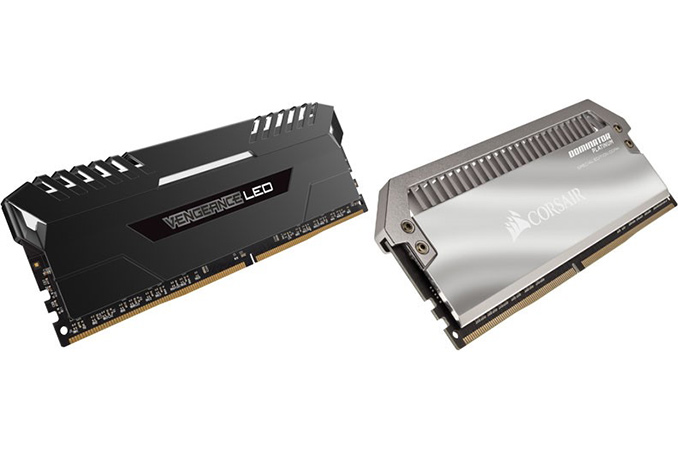


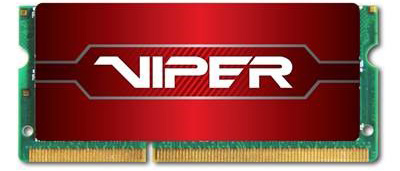

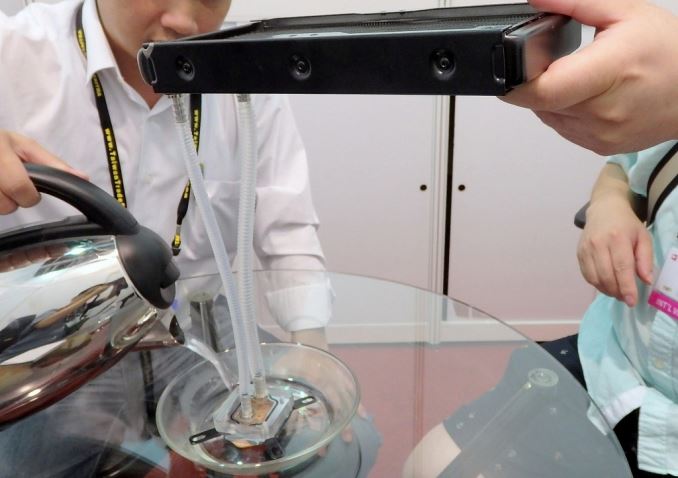
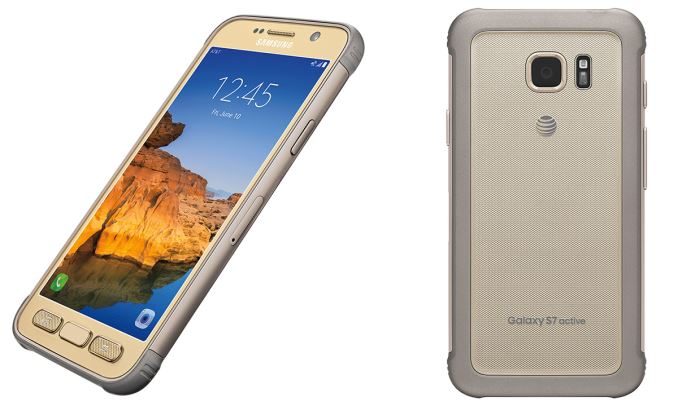


















Bookmarks